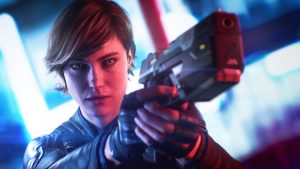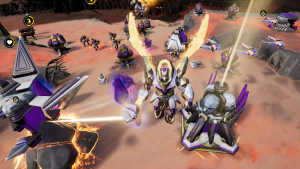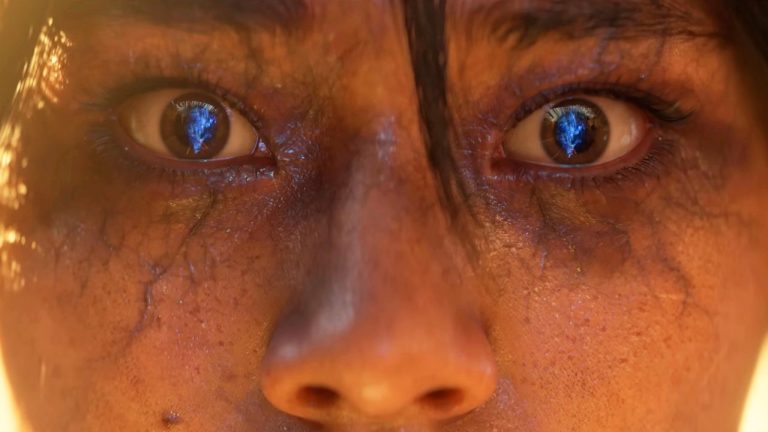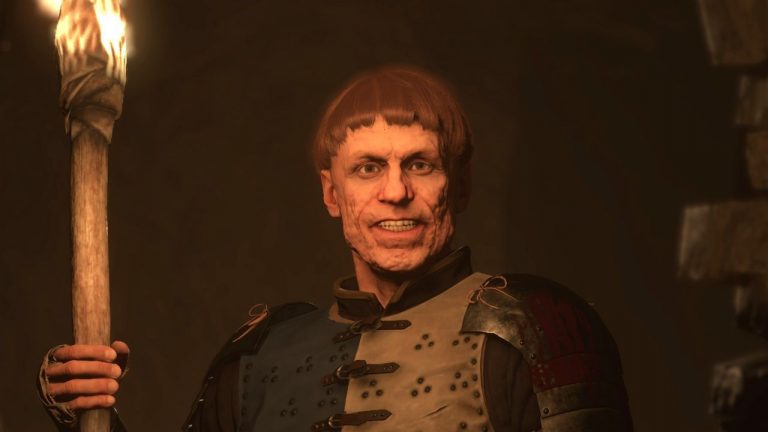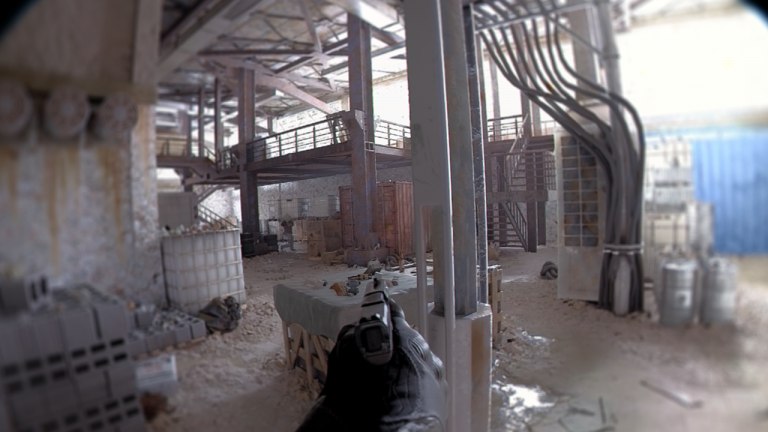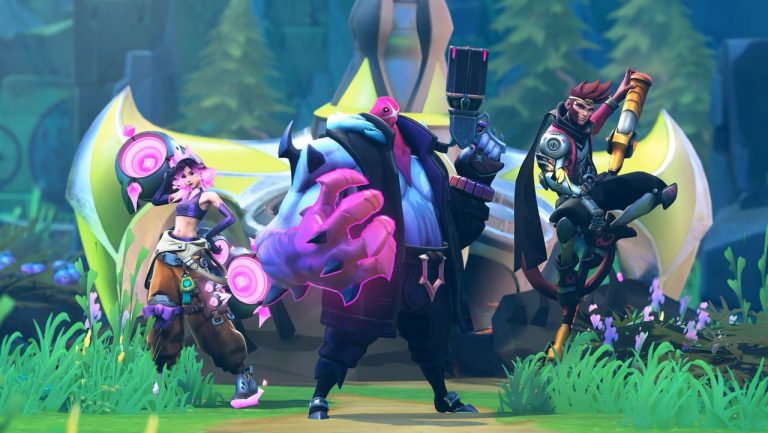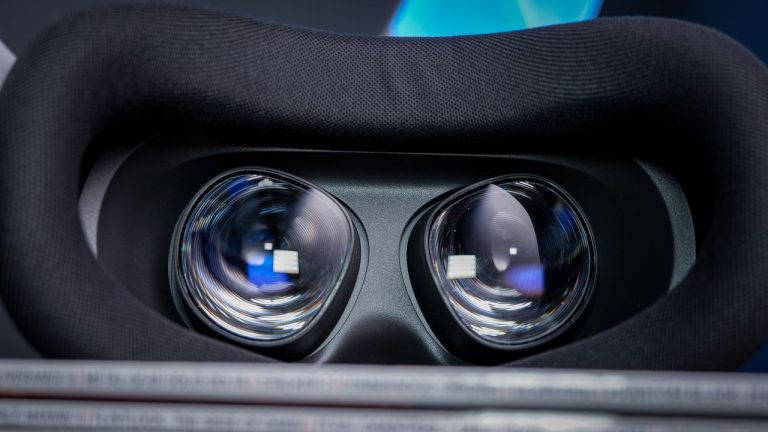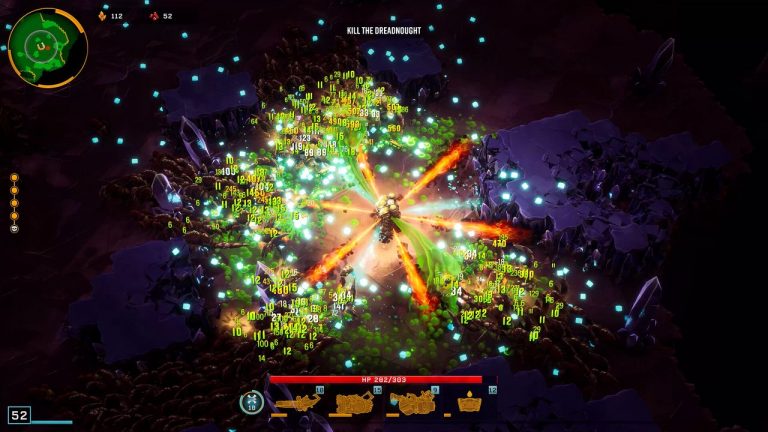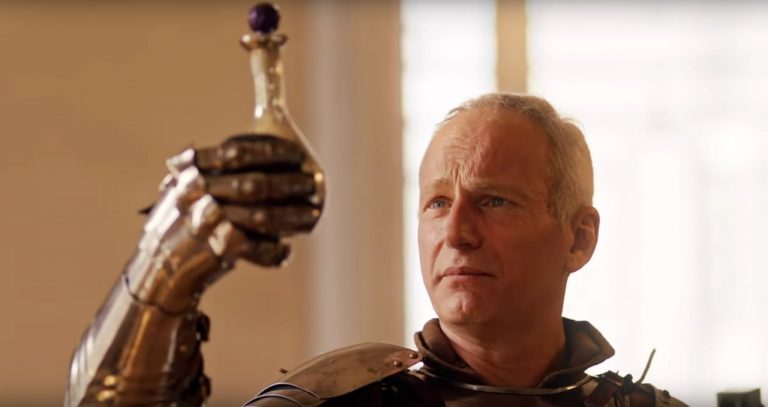Stormgate, an RTS that I’ve thoroughly enjoyed watching grow since it was first unveiled last year, just revealed its third faction at the PC Gaming Show: The Celestial Armada. If you watched, hopefully you got a nice taste of what to expect, but perhaps the best way to get to grips with an army that’s as unusual as these sci-fi spiritualists is by enlisting the assistance of the pros.
PartinG is the top Stormgate player in the world and a StarCraft 2 world champion. TheoRy is one of the strongest Stormgate players in North America, currently ranked sixth globally, and a competitive StarCraft veteran. I could not have asked for better—or more patient—mentors.
(Image credit: Frost Giant Studios)
Even in a game where the factions are explicitly designed to be asymmetrical, the Celestials stand out as unusual, using extreme mobility and divine magic to dominate the battlefield. While the Vanguard and Infernal factions are undeniably distinct, the Celestials are so different, even at the most basic mechanical level, that it’s surprising to see them in the same game. This is apparent the moment you jump into a match, where you begin with a flying HQ and a mobile collector.
This really changes how their economy works, TheoRy explained. “Their main base is not set into the ground like traditional RTS factions,” he said. “It’s a moving Arcship. And they don’t have workers per se; they pollinate the map with collector nodes, which I think is like one of the coolest sci-fi RTS concepts that I’ve seen.”
So with your flying HQ, your Arcship, and your mobile collector, the Morph Core, you can rapidly set up bases all over the map straight away. You don’t even need workers to start building, or harvesting luminite, Stormgate’s primary resource. The faction doesn’t entirely throw out the concept of workers, but it dramatically reduces their role, and in turn removes some of that micromanagement strain—though it’s worth noting that, across the board, Stormgate does some clever things with worker automation—as well as shoring up the inherent vulnerability in having essential but easy-to-kill units.
(Image credit: Frost Giant Studios)
PartinG has played a lot of games as the Celestials. At the time of our chat in mid-May, he’d played around 500 ranked matches. “The way it plays is really unique,” he said. “At first, it was quite startling, like ‘What the hell am I doing?’ But over time, as I checked out the faction, it started to grow on me and I realised it’s actually easier to manage the faction’s economy and combat than it first appeared.” So while the Celestials are “strange and weird and totally new”, it’s a good pick for newcomers to the game. Having only played as the Vanguard briefly, and not competitively, this sounded like good news to me.
Stormgate is brisk, and you’re trying to juggle your economy, micromanage groups and individuals, deploy abilities, constantly expand, and deal with traps and mind games from your opponent all in the space of a few seconds. I’m rapidly approaching 40 and my days of playing StarCraft competitively—or at least trying to—are far, far behind me. Despite the fast pace, though, Stormgate is not a game that demands superhuman reflexes or an obsession with APM. And TheoRy managed to bolster my confidence a wee bit.
“I played competitive StarCraft from 2011 to 2013, more than 10 years ago,” he said. “So this new game has allowed me to play competitive again. I lost my competitive edge in StarCraft throughout the years. I kind of stopped playing, but then this new game comes out, I come back and have decent success during the beta—kind of starting over again. And I think new players who want to go professional or competitive, this is kind of like a big reset. They have the opportunity to learn the game at the same time as the great Starcraft players, and maybe even match them or surpass them.”
Flying high
(Image credit: Frost Giant Studios)
Following a quick comp stomp with PartinG and TheoRy (where they absolutely carried me), I started a match against Stormgate artist Timmy Ryu. Here, the faction’s mobility became immediately apparent when PartinG advised me to begin harvesting resources well outside of my starting location. First, I sent my Morph Core north to start exploiting a luminite node across the river. When my Morph Core arrived at its destination, I turned it into a Collection Array. This building passively harvests 300 luminite per minute, a rate that can be enhanced by constructing floating Prisms. These worker units can increase the production of a mine, or can be sent to a therium field to directly harvest that resource, which is then stored in a Fabricator—the second building a Morph Core can transform into.
Before I’d constructed a single offensive unit, then, I’d already expanded to another part of the map, with two luminite mines up and running. Later, PartinG and TheoRy would remind me to move my Collection Arrays, because just like the Arcship these are mobile buildings. When the luminite dries up, you just send them up into the air and start expanding in a different location. This also means, as TheoRy pointed out, you can save them if your opponent tries to wreck your economy. You just launch them, and as long as your foe hasn’t brought any anti-air, they’ll survive.
The shortcut system makes managing all of this a lot easier, in part thanks to the way it’s all laid out. “There are so many good quality of life things that adhere to modern standards,” said PartinG, “such as how our keyboard settings are matched to QWERT, just like how League of Legends and all those games are doing—so people can intuitively use their keyboard shortcuts.” So Q brings up my building menu, and then I can hit X to queue up another Morph Core. Or with W I can bring up my recruitment menu and start spamming A to generate a whole bunch of Argents—the Celestials’ basic ranged unit.
(Image credit: Frost Giant Studios)
There’s also a logic and consistency to the shortcuts, which add to how intuitive they feel. “I really like the quick access unit build and upgrade tabs,” said TheoRy. “And I like how if you press W, C to build a Kri [the basic melee unit], if you wanted to upgrade the Kri, it’s R then C. The letter C aligns with the unit and the upgrade which makes it really easy for me to pick up the new races.”
Another great quality of life feature is that every faction starts with the ability to scout straight away. “So you can actually do some super early-game scouting,” said PartinG. In Warcraft and StarCraft, you first had to establish your base before scouting, which “just creates a hurdle or barrier” for people learning how to play. “So having your starter scouting unit really prevents the chance of you just gathering resources and being peaceful and out of nowhere getting rushed.”
The Vanguard gets a cute lil’ robot dog and the Inferals get the considerably less cute Hexen. But again, the Celestials don’t work like the other factions. A scouting unit is available, but not right off the bat. This isn’t a problem, however, because both the initial Morph Core and, more importantly, the Arcship can serve as early scouts.
Creep killer
(Image credit: Frost Giant Studios)
With my Arcship able to flit about, I could start exploring the map and taking on creep camps. Like Warcraft 3, these camps are dotted around the battlefield and contain aggressive critters. In Warcraft 3, slaying them gives you experience and loot; in Stormgate, you get access to a tower that can confer a variety of bonuses. A luminite tower, for example, passively generates luminite for you. A healing tower, meanwhile, will heal all of your units in the area.
The Arcship slowly drifted across the map towards the nearest tower, where I plonked it down and opened fire. A full-health Arcship is in no danger from creeps, though there’s still an inherent risk because it will still take damage, and the last thing you want is for your HQ to be taken out—especially at the hands of PvE enemies. Other buildings can also temporarily be imbued with the ability to attack enemies thanks to the Celestial’s Sovereign’s Watch ability. It only lasts for 30 seconds, but it gives the building a beam attack that grows in power.
While the faction’s mobility is a headline feature, it’s ultimately just a single part of what makes the Celestials special: the focus on buildings. The faction’s eclectic mix of units can be extremely effective, but they aren’t quite as tough as the competition. It’s a different story when they are fighting near Celestial buildings, though. So the Arcship can back them up with its own armaments, and any building can essentially become a turret. Tech buildings, meanwhile, have a second function alongside letting you research upgrades.
(Image credit: Frost Giant Studios)
“One cool thing about all these tech buildings is they have innate abilities built in,” said TheoRy. “So like the Guardian Nexus will heal things around it, as well as unlock tech.” This ultimately works in tandem with the faction’s mobility. You can rapidly move to a new part of the map, quickly set up a base, and then draw enemy units into it where you have a big advantage.
With the creeps dead, I established a third base, plonking down two more Bastions—I already had one up and running next to my new Collection Array—allowing me to spit out offensive units at a faster rate. Unfortunately, while the Arcship can do many things, it can’t actually capture the towers, but the moment I had some Argents the tower was mine.
So within a few minutes, I had a tower, two bases generating all the resources I needed, and a third base around the tower. The Celestials sure are rapid expansionists. And while I was building the multi-purpose Force Projector—a building that unlocks essential unit upgrades, the Celestial scouting unit, and decreases the damage and speed of nearby enemies—I sent my Arcship to soften up another tower. And it was a good thing, too, because mere seconds after my Argents claimed it, an enemy force arrived.
(Image credit: Frost Giant Studios)
My nemesis, Timmy Ryu, and his foul Infernals wanted the tower for themselves, but my Argents swiftly took them out (he’d get his revenge later, and then some). I didn’t have time to savour my victory, though, because PartinG and TheoRy had plenty of tasks for me. While I could have recruited some scouts to hunt for Ryu’s base, instead I used the scan ability to clear some of the fog of war. I then placed some Mainframes to recruit my first mech units, including my MVP, the brisk and highly explosive Kri; built some Power Banks to feed my faction’s need for power; and queued up an army of Argents and Prisms, to fight Ryu and maintain my economy.
I cannot emphasise how much I love the Kri enough, especially with the Roll Out upgrade. They’re basic melee fighters, but even basic units in Stormgate feel pretty fancy. “They’re really strong,” said TheoRy. “They’ve got two AoE attacks, too, so they are also really good at clearing the workers before they kill a base.” This was something I would soon prove when storming the Infernal base.
Pinball
(Image credit: Frost Giant Studios)
Initially, the Kri are pretty handy because they’ll be your first melee unit, but more so because they explode when they take fatal damage, hurting or even destroying nearby enemy units—or at the very least forcing your opponent to give you some breathing room. Roll Out makes them even more essential, though, transforming them into speedy little balls of death when they move—as long as they’ve been out of combat for three seconds. In ball-form, their speed is increased by 30%, making them great at chasing, and on top of that their first attack then damages all surrounding enemies.
Frankly, it’s wild how deadly these lads are. They just roll in, instantly take off a chunk of health, and then start swiping and slashing until there’s nothing but diced meat left—which seems to only take milliseconds.
The first time I played Stormgate, back when only the Terran-like Vanguard were available, I couldn’t help but get excited by every new unit that I unlocked. All of them have a cool hook that makes them feel novel while emphasising what roles they slot into. With the Celestials, this is even more true. So while I had the most fun with the Kri, each unit elicited a “Damn, that’s badass” from yours truly, whether it was the self-repairing tank-like Saber, which has an ability that circumvents its ponderously slow base speed; or the Animancer, a caster who can suck out energy and health from targets and redistribute it to friendlies, or summon a deadly singularity that slows down and damages enemies while also removing obstacles like trees. The singularity is a double-edged sword, though, because it can also damage your own units—a fact that I had to be reminded about multiple times.
(Image credit: Frost Giant Studios)
One of the things I really loved about using the Celestials was never needing to worry about a supply cap—at least not in the way that I would with another faction. Vanguard players, for instance, have to build Habitats to expand their supply limit past the initial 15, up to a maximum of 300. The supply cost of units ranges from one to six. As the Celestials, though, you can build as many units as you want right from the start, up to the 300 cap. Celestials have power demands instead, with every structure consuming a different amount of power. That’s their limitation. So you need to build Power Banks to expand your bases, rather than Habitats to grow your army. This means you can rapidly build a beefy force.
I can still hear PartinG enthusiastically shouting “A and C!”, reminding me to keep building more Argent and Kri units to throw into the meat grinder. Because of the Celestials’ powerful economy, there was never any reason not to spit out more of them.
So there are plenty of cool toys to play with, but all good things must come to an end. Thanks to PartinG, TheoRy and my horde of wonderful Kri, I’d obliterated one of Ryu’s large bases, and I still had a big army intact. But while I was busy enjoying myself, blowing up the last of his buildings, he snuck an army down to one of my bases. Panicking, I grabbed my entire force and just clicked on the minimap, not really thinking about the route they’d pick. Unfortunately, the fastest route was right through one of Ryu’s other bases. One that was heavily defended. Fixated on what was happening to my own base, I didn’t notice until it was too late. “Oh my god, no!” PartinG yelled. “You’ve lost everything!” Only a handful of Argent and Kri made it out alive. It was incredibly embarrassing.
(Image credit: Frost Giant Studios)
From there, the end was inevitable. I managed to rescue my HQ from another Infernal attack, sending it into the sky, but it didn’t matter. I couldn’t come back from this. Ryu’s finisher was a vast swarm of flying units that he’d been holding back—he’d been going easy on me—which descended upon my now largely undefended buildings. I was done. GG. WP.
It was a shameful end to a very entertaining match. But it’s inspired me to get good. In the days since PartinG and TheoRy lent me their expertise, I’ve been training—trying to figure out the strongest army compositions and how best to handle Vanguard and Infernal armies. Just against bots, mind. I want my brain to be full of strategies before I take on another human. But for the first time in a while, I’m excited to dip my toes into the competitive side of real-time strategy again. If you’re lucky, you might get a chance to beat me up when it launches in early access on August 13.
Note: Frost Giant has been responding to beta feedback since I played, and some changes have already been made, including the removal of the Morph Core (harvesting buildings are now built directly from the main construction menu) and the addition of a stationary HQ (the Arcship remains, however, so the faction is still very mobile).

